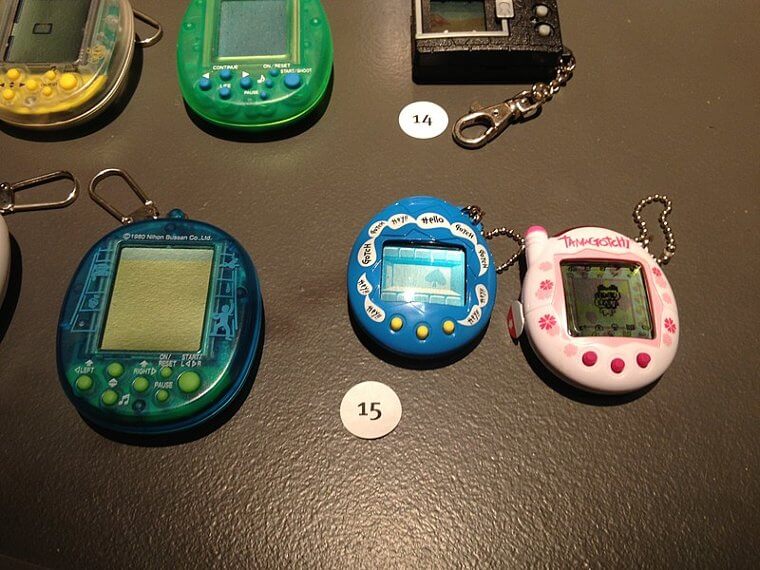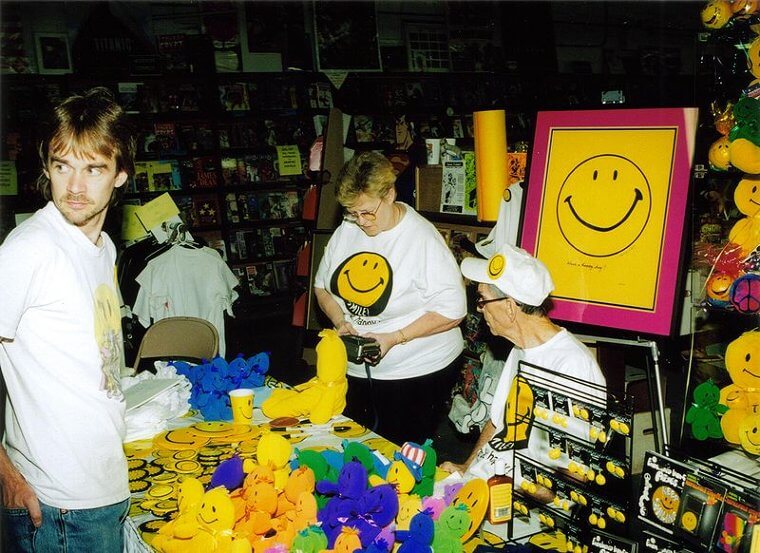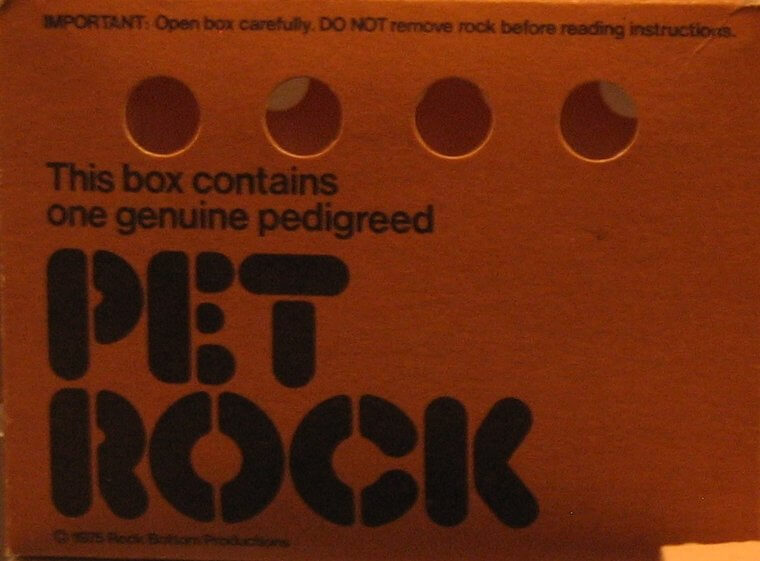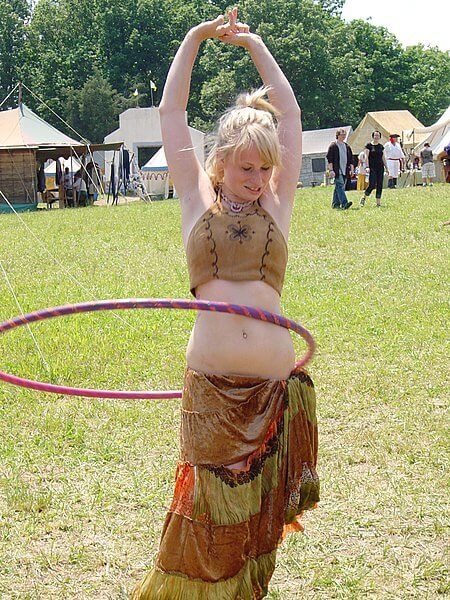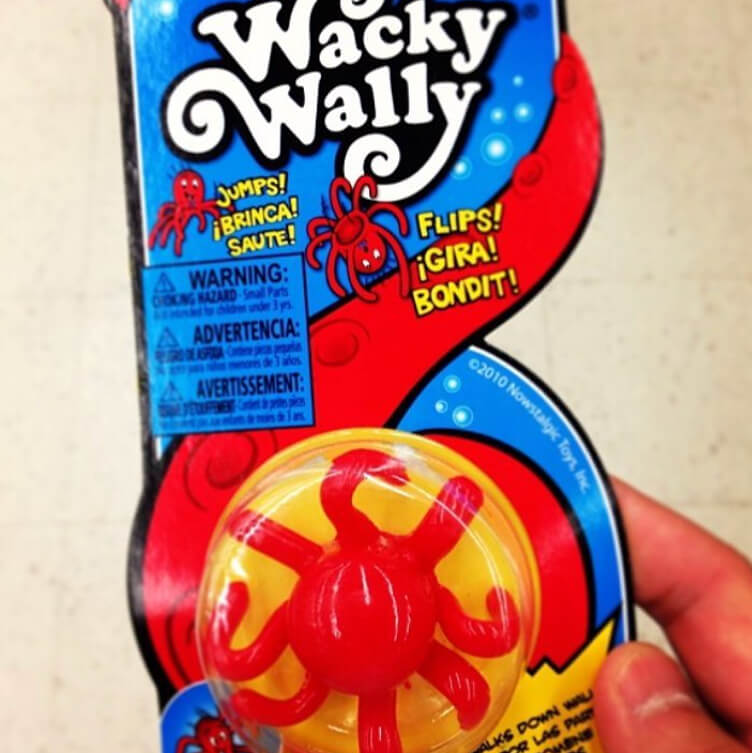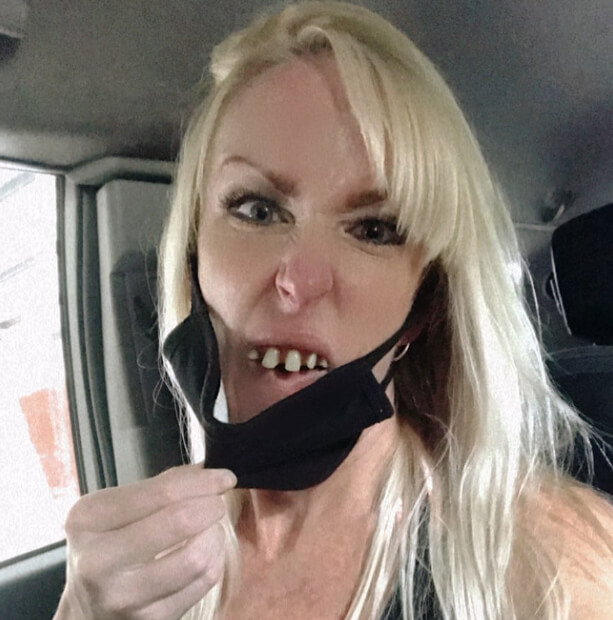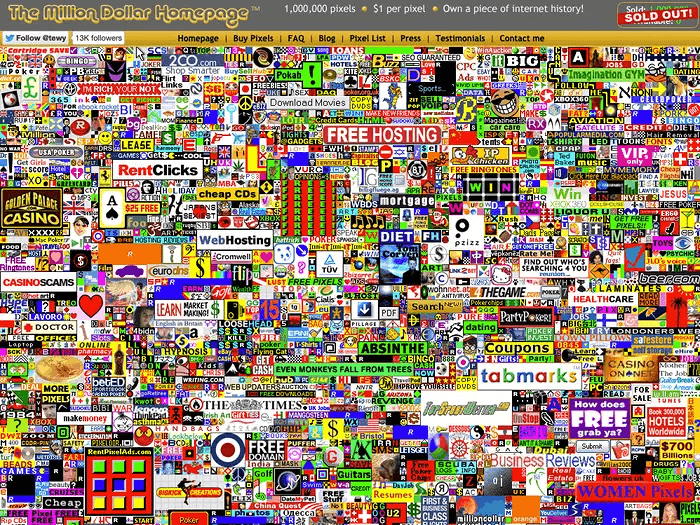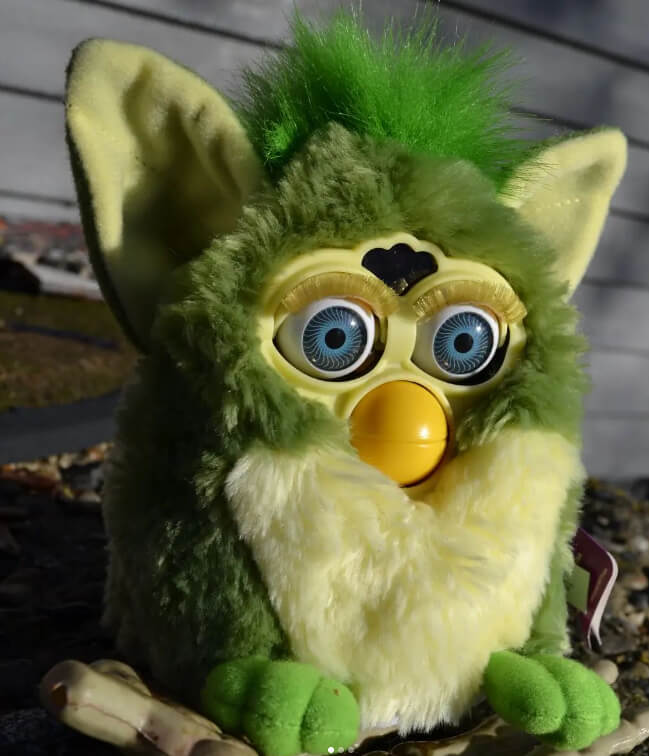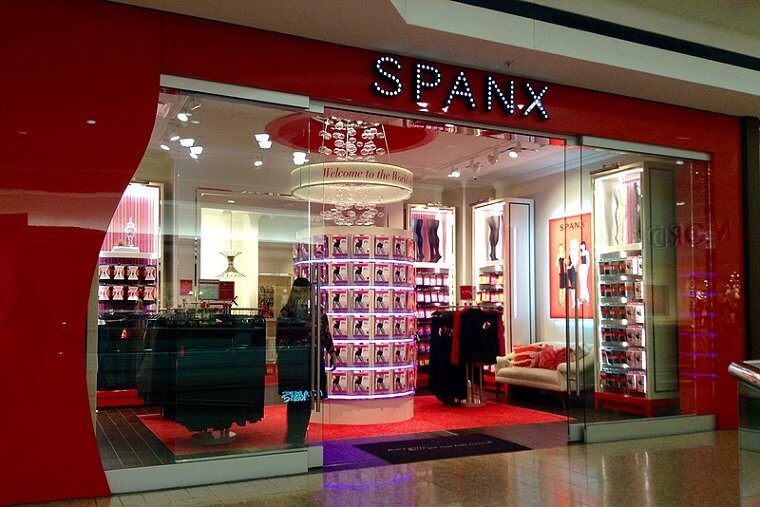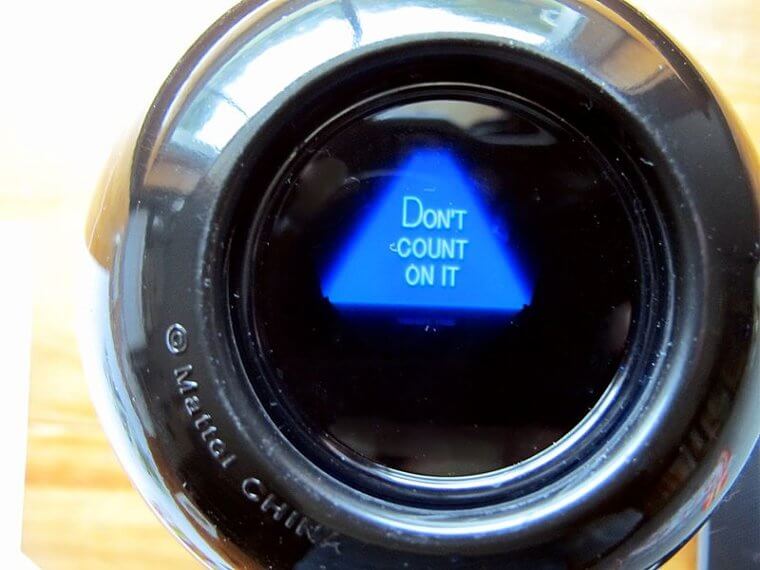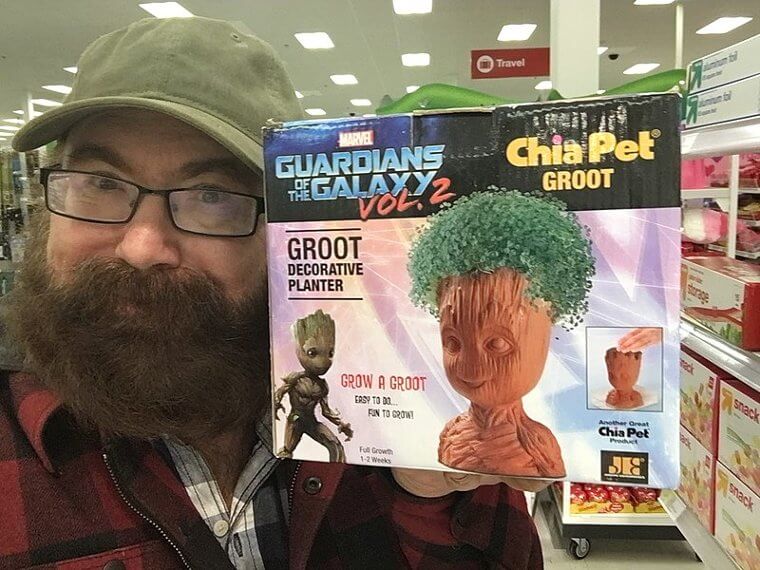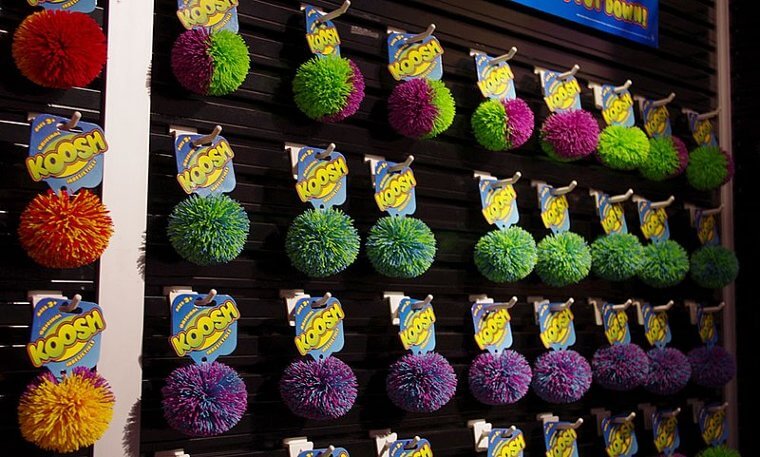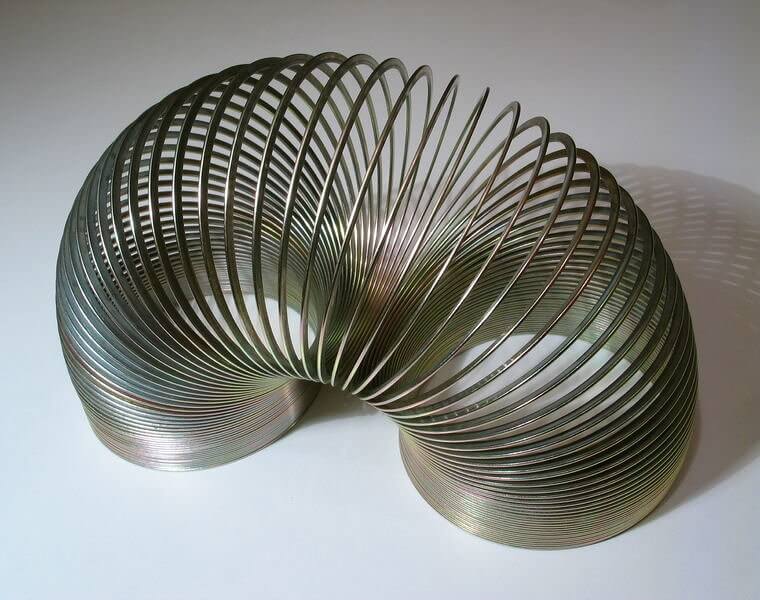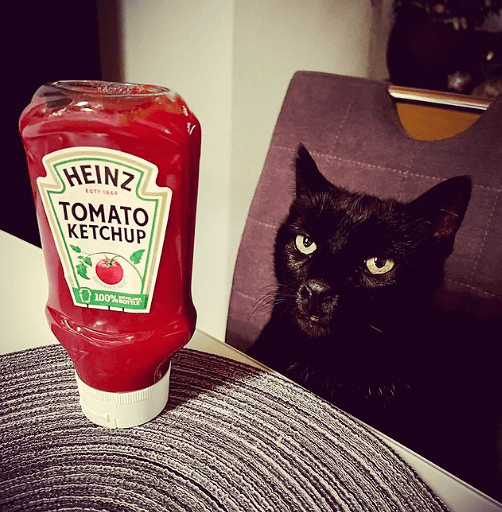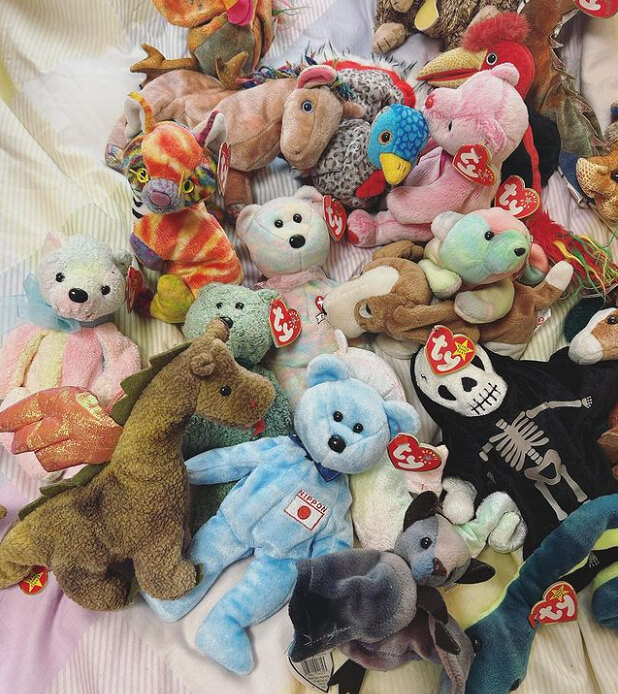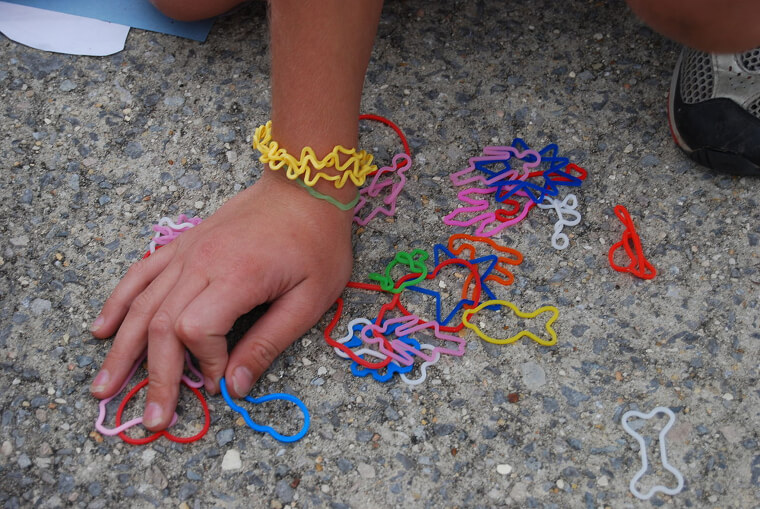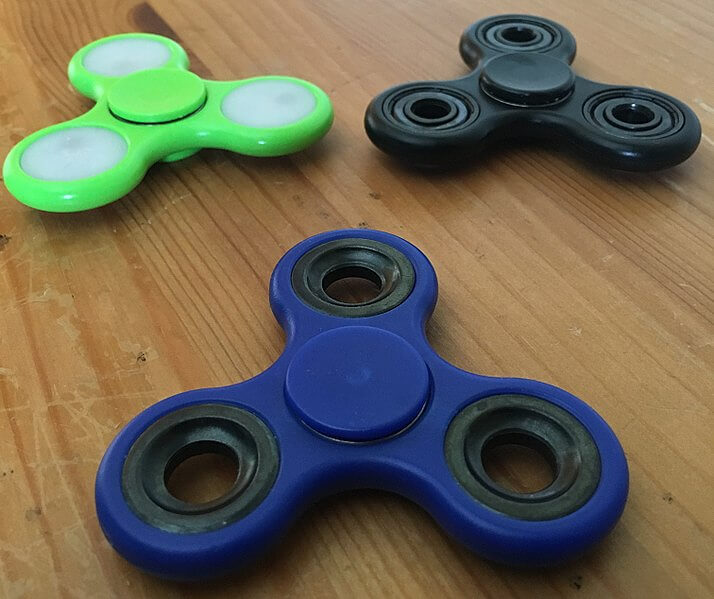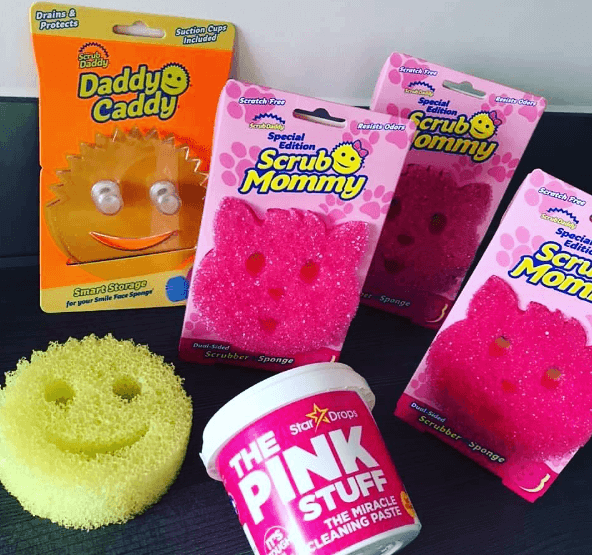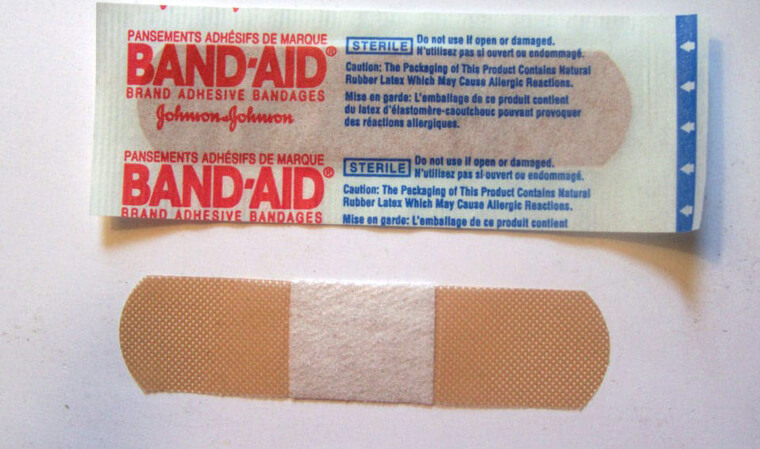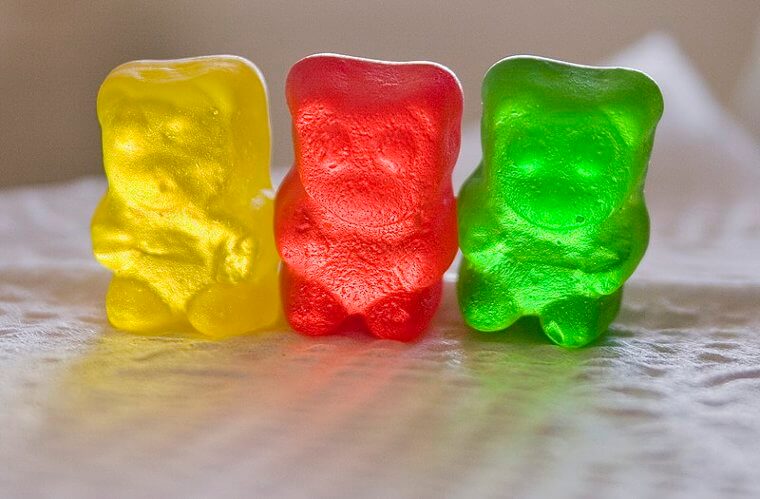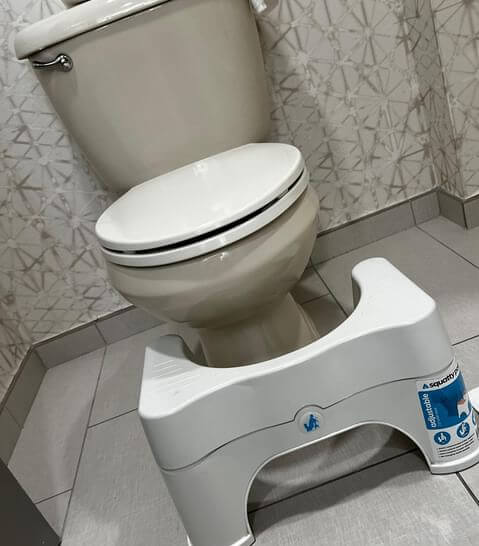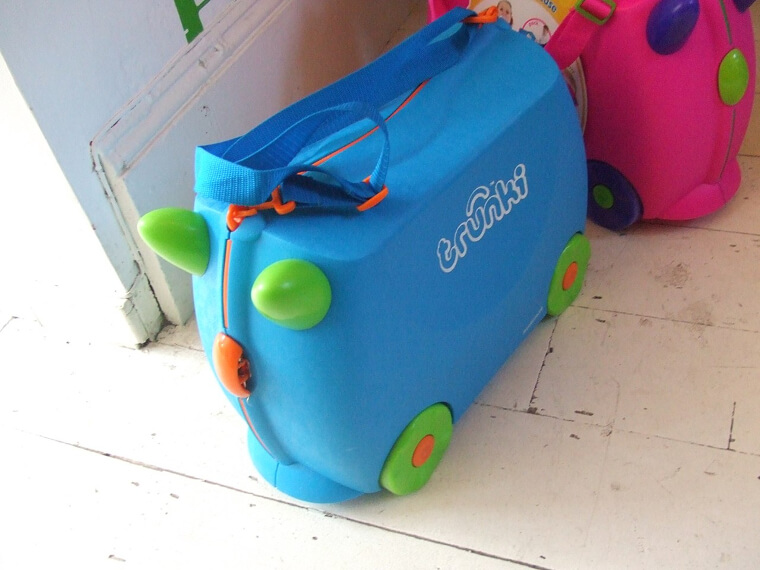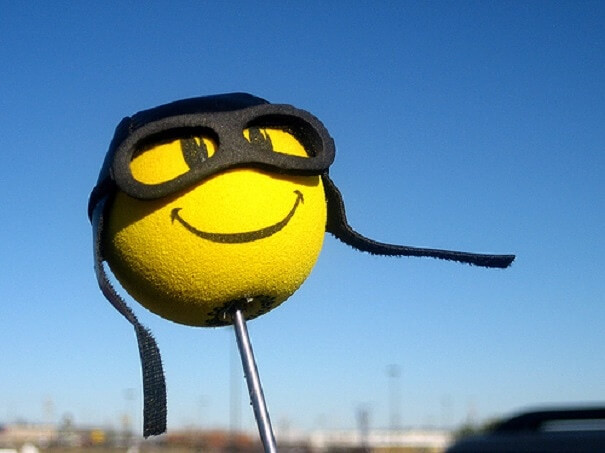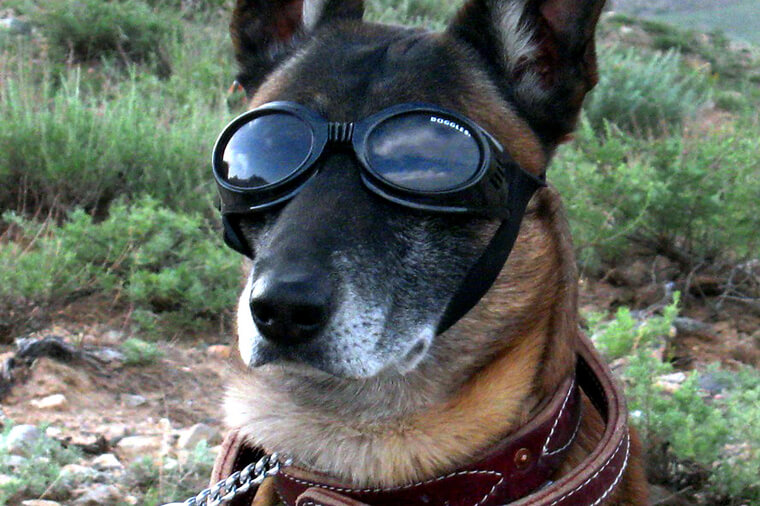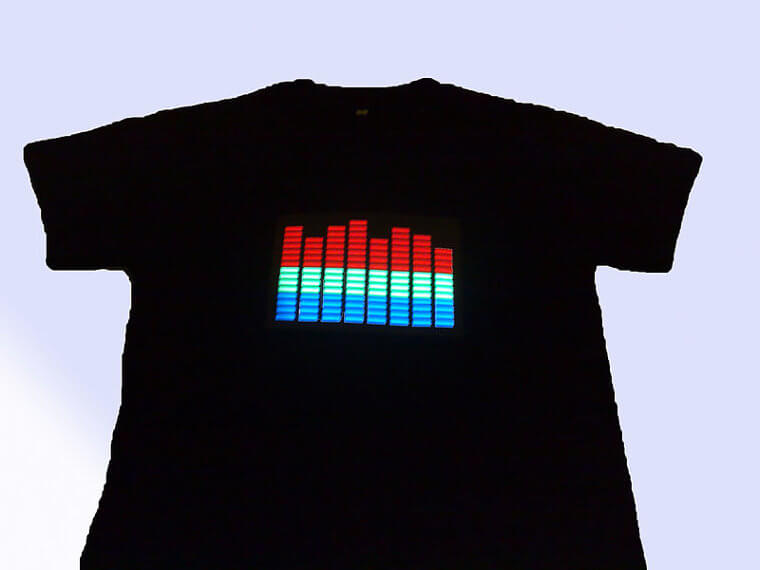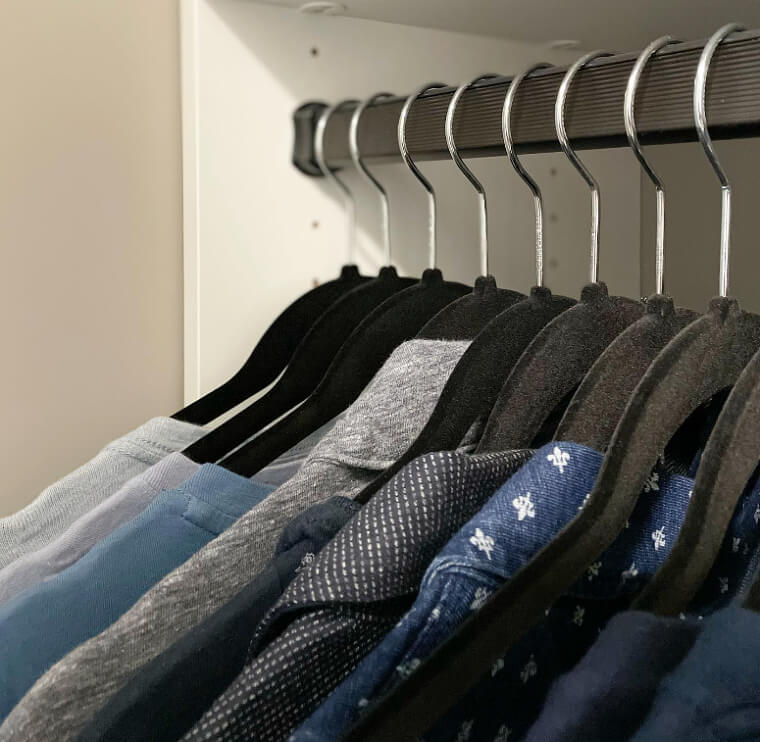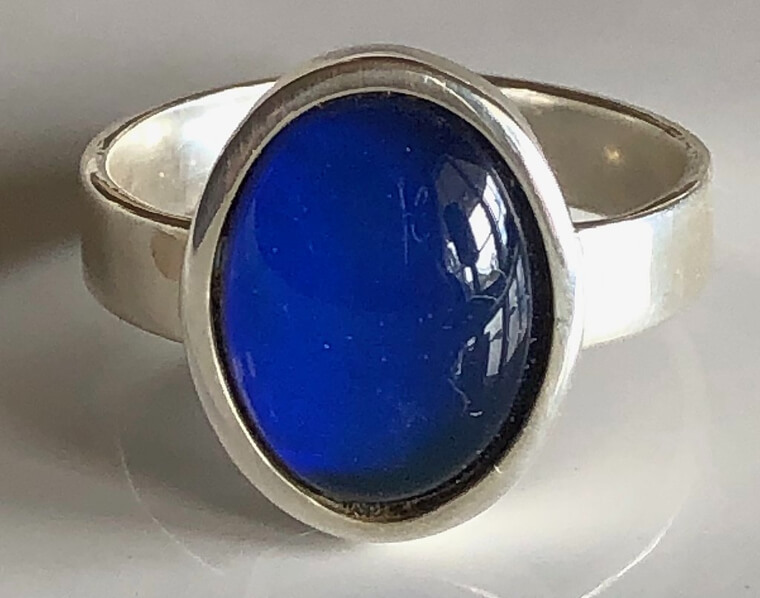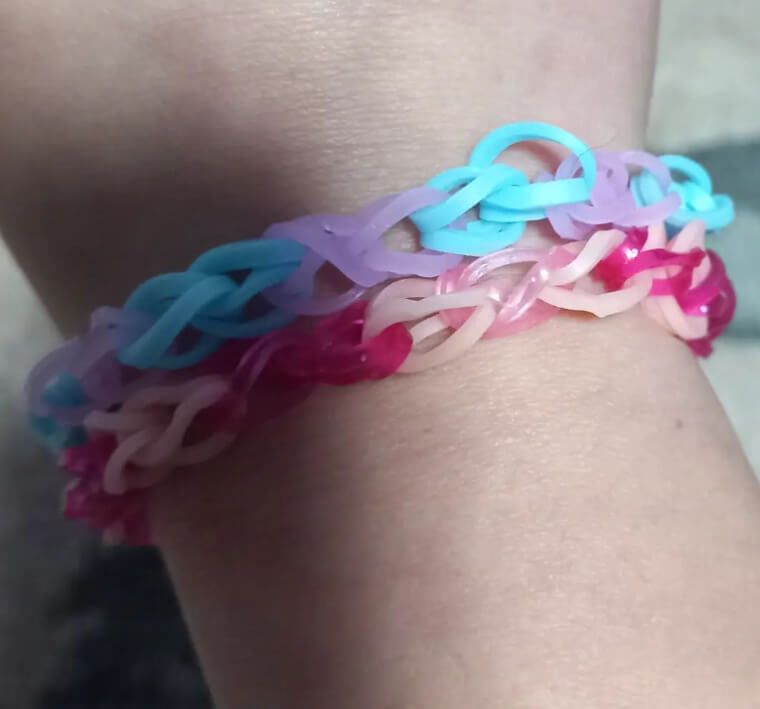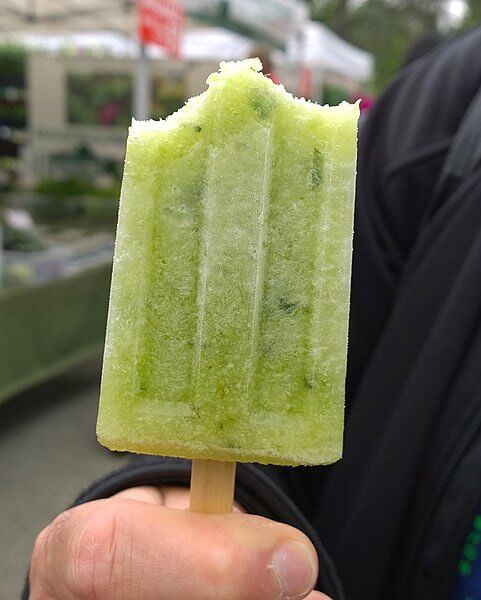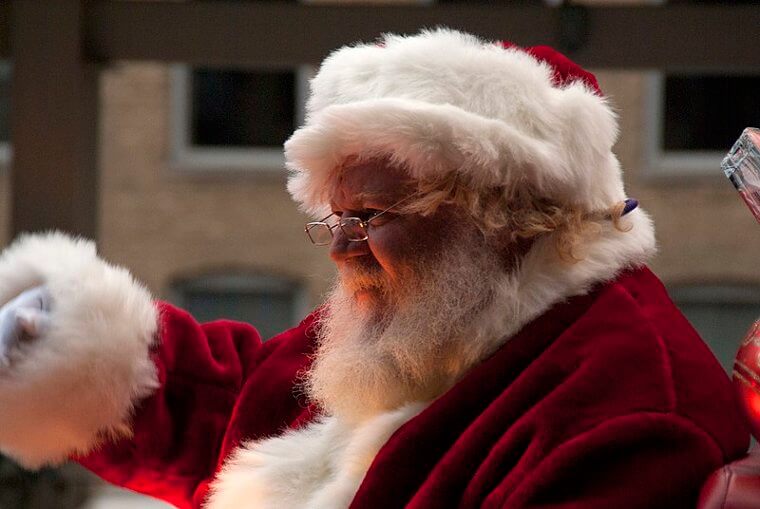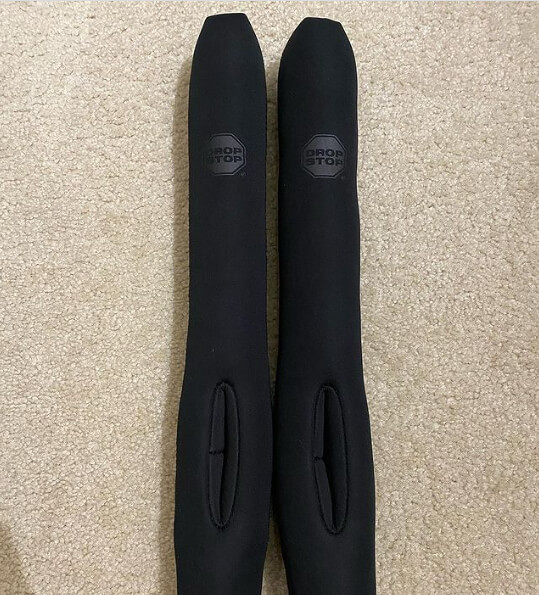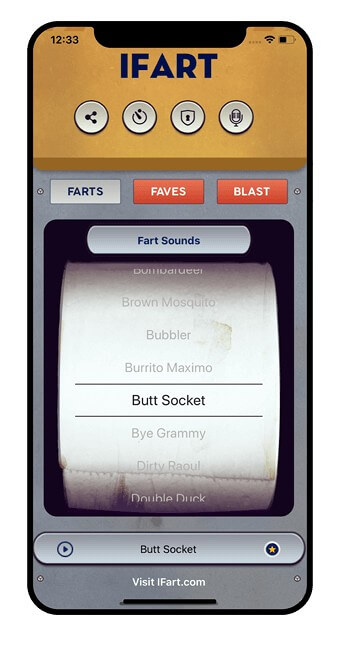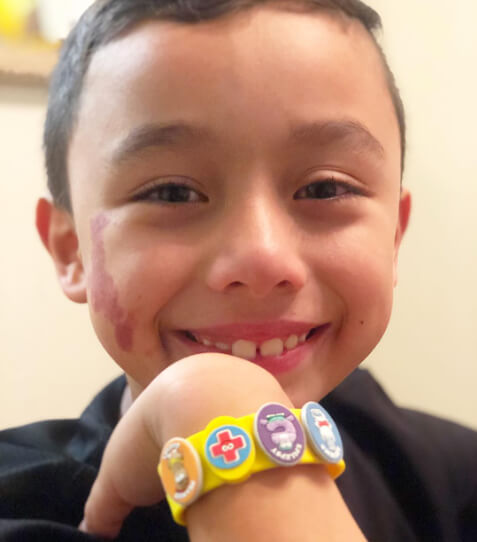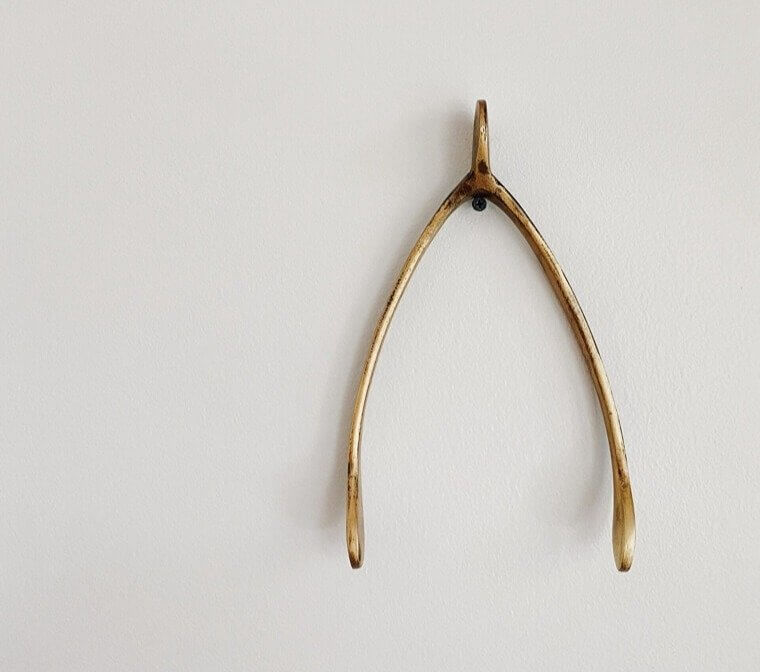Tamagotchis Now Sell For $59.99 A Pop
If you grew up in the 1990s, then you probably remember Tamagotchis. These little gadgets were basically like virtual pets that you'd have to take care of and keep happy. The idea for Tamagotchi was conceived by a "low-level office lady" who took her idea to Bandai's toy designer Akihiro Yokoi. He apparently thought it was a good idea because the company released the toy line the same year. Some estimates say that over 70 million were sold in the 1990s, with a Tamagotchi being bought nearly every second.
When they were released in 1996, Tamagotchis were being sold for $17.99. However, they have recently been revived and are now priced at around $59.99 per device and marketed towards Gen Z.
A $250 Million Smiley Face
Contrary to popular belief, Forrest Gump did not actually provide the inspiration for the iconic yellow smiley face. Instead, it was invented by a man named Harvey Ball in 1963. Ball was looking for a way to brighten up simple things like buttons and ended up drawing the iconic smiley face for his marketing company's client. However, he never trademarked the idea, and he only ended up fetching around $45 for it.
The design was later bought by Bernard and Murray Spain, and from there it only grew in popularity. Today, a company named SmileyWorld owns the design and they make around $250 million a year from the rights.
Big Mouth Billy Bass Made Inventor $100 Million
Love it or hate it, there's no denying that Big Mouth Billy Bass was a hit when it was released in the early 2000s. For whatever reason, people just got a kick out of a fake stuffed bass hanging on the wall and singing "Don't Worry, Be Happy" and "Take Me to the River." It also made its inventor, Joe Pellettieri, a lot of money. Estimates put earnings at around $100 million.
And you can actually still buy the iconic singing bass to this day, although it has been slightly updated and is now compatible with Amazon's Alexa, in case you don't feel like walking up to it and pressing a button.
Pet Rocks Garnered $6 Million In Sales
Don't have time for a pet animal or a pet plant? Well, maybe you should consider the Pet Rock. A lot of other people certainly did in 1975. The idea was the brainchild of Gary Dahl, who thought of it after hearing some friends complain about not having enough time to take care of their pets. The advertising executive marketed these random rocks as "pedigreed" pets on the packaging, and the idea took off.
It eventually made Dahl around $6 million, but the fad didn't last all that long. Still, this is probably one of the most ridiculous million-dollar ideas on this list, and you have to admire Dahl.
Modern Plastic Hula Hoops
The idea for a hula hoop wasn't exactly new when they were released in 1958. Kids from pretty much every region of the world had been playing with hoops for centuries. Even the inventors of the modern hula hoop, Arthur K. "Spud" Melin and Richard Knerr, got the idea after seeing kids play with bamboo hoops in Australia. However, there's no denying that their bright, plastic hoops were an immediate hit when they were released, selling nearly 25 million in the first four months.
The plastic hula hoops were priced at $1.98 when they were released, and the two's company, Wham-O Hula Hoops, ended up patenting the idea in 1963. Today, the company is just called Wham-O.
Wacky Wall Walkers Made $80 Million In Months
Okay, so this one wasn't actually invented by the person featured in this description, Ken Hakuta. Instead, Hakuta bought the rights to the toy for around $100,000 from a Chinese manufacturer. And his business wasn't actually going very well at first. It wasn't until a reporter wrote a story about the toy that sales actually took off, making Hakuta $80 million in a matter of months. Everyone suddenly seemed to love the sticky, gooey toy.
The toys were so popular in the 1980s that they used to come in cereal boxes. Today, they can be found at some toy stores and, of course, on Amazon.
Billy Bob Teeth
Believe it or not, Billy Bob Teeth actually started out as a way for its inventor, Rich Bailey, to flirt with cheerleaders while in college. We're not exactly sure what the routine was, and Bailey had only made a couple at that point, using Missouri State University's lab, but it caught the eye of his future business partner Jonah White, while the two were at a university football game.
Bailey and White would go on to make more and sell them at bars and fraternity houses. Today, the iconic gag item has sold 15 million sets and can be found in nearly every country in the world.
People Have Spent $500 Million In Snuggies
While the commercials might be pretty bad, we have to admit that the idea behind Snuggies is actually kind of genius. Who wouldn't want a blanket that you could wear? Snuggies were released by Scott Boilen and Allstar Products in 2008 and have made around $500 million in sales since. However, they weren't actually the first blanket-like product to be released. Something called the Slanket was actually released years earlier.
However, a combination of corny commercials and lower prices eventually rocketed the Snuggie into the cultural consciousness in a way the Slanket was never able to achieve. The name Slanlet probably didn't help, either.
The $1 Million Homepage
In 2005, a college kid named Alex Tew released the $1 million homepage. Tew was basically trying to make some extra cash while at Nottingham University and came up with the idea for his homepage. It involved selling ad space for $1 per pixel, and it caught on. Soon, he had sold every pixel on his homepage and was $1 million richer for it. But, he didn't just stop there.
Tew dropped out of university to focus on his career, founding a hugely popular meditation app called Calm recently. The app has been valued at $1 billion, which is a step up from his homepage idea.
Furby Netted Around $500 Million
Furbies may not be very popular today, but when they were released in the 1990s, everyone had to have one. The toys talked, blinked, and moved from side to side. They also made their company $500 million a year when they were at the height of their popularity. Oh, and they caused a national security scare when the National Security Agency alleged the toys could record and were actually a "Chinese-manufactured spy."
The head of the company that made them, Roger Shiffman, denied the allegation, saying that Furbies were not able to record conversations. However, the toys were known to sometimes glitch out in the middle of the night and go awol.
Spanx Made $4 Million In First Year
It's hard to say that any one of the ideas on this list is the simplest, but Spanx would definitely be in contention. Sara Blakely took $5,000 in savings and some pantyhose and turned them into $4 million in the first year. Before she had her idea, Blakely was working as a door-to-door saleswoman selling fax machines. By 2013, she had become a billionaire. That's not bad, considering she started selling Spanx in 1998.
Her company continues to grow to this day, and she's even been named by Time as among the most influential people in the world. The iconic Spanx trademark was also registered for only $150.
Magic 8 Balls
The story behind the iconic Magic 8 Ball toy, is actually a fairly interesting one. As you might guess, the toy's inventor got the idea after seeing a device being used by a clairvoyant he knew. He took the idea to a local toy company, which seemed to like it because they began mass producing Magic 8 Balls, which were at first called "Syco-Seers". The men patented the idea in 1948.
Carter died before the toy became the hit that it is today, but Mattel, which owns rights to the toy today, has said that around a million are sold every year.
The Chia Pet
Ever want a pet animal, but you only really have enough time to water a plant every day? If so, then you were probably Chia Pet inventor Joe Pedott's target audience when he came up with the idea for his iconic pet plant in the 2000s. Chia Pets still sell exceptionally well today, with around 500,000 being bought every holiday season for around $16 per pet. What can we say? People love their plants and their pets.
If you've ever wondered what kind of plant is actually grown in Chia Pets, then today is your lucky day. Chia Pets actually use seeds from Mexican chia plants.
The $100 Million Koosh Ball
Just when you thought humans had invented every different shape, size, and type of ball possible, along came the Koosh Ball in the 1980s. Its inventor, Scott Stillinger, has said that the Koosh Ball was the result of wanting something that was not as light as a foam ball but heavier than a bean bag. That's a pretty weird objective, but it eventually led to the invention of the Koosh Ball.
Rights to the toy were eventually bought by Hasbro, and Time magazine has even named it among the most influential toys of all time. By 1995, "millions and millions" had been sold.
The Iconic Slinky Has $3 Billion In Sales
Like a lot of iconic inventions, the Slinky was almost never made. Its inventor, Richard James, only happened on the idea by chance after he dropped a spring on the floor and saw that it kept slinking around on its own. James experimented with different designs for a couple of years before releasing the now-iconic toy, and it was an instant success. But that's not actually where the story ends.
James's wife was forced to take over control of the company years later after James moved abroad in order to join a cult. After she passed away, The New York Times estimated that enough slinkies had been sold to span the Earth some 150 times.
$14 Million Ketchup Bottle
Another seemingly obvious invention, the modern ketchup bottle, was only thought of in 1991. Paul Brown came up with the idea for a bottle that sits on its top rather than on its bottom after what we can only guess was a frustrating five minutes trying to get some ketchup out of a bottle. He ended up selling his idea to NASA and Heinz for a cool $14 million.
It was enough to get him an early retirement and countless articles online focusing on how simple and useful his design was. We're sure after he thought of it, he was probably asking why no one else had either.
Beanie Babies Netted $6 Billion For Their Inventor
If you were around during the 1990s, then you most likely remember the craze that was the Beanie Babies. The inventor, Ty Warner, made $700 million off the toys the first year they were released, and he created an entire resale market for them at the same time. Part of the success of Beanie Babies was convincing people that they were collectible. Warner's company would tell shops to avoid selling too many in order to drive up scarcity.
However, sales still dropped off in later years. By 1999, Beanie Babies had just over $1 billion in sales, and more recent figures put sales numbers at around $6 billion.
The Silly Bandz Craze
Silly Bandz were released back in 2008, but they were far from the only bracelet-related craze to gain attention at one time or another. Still, the fact that they were shaped like popular animals and dinosaurs and that they came in bright colors meant they quickly gained popularity. It also didn't hurt that they could be stretched out and just reverted back to their original shape, meaning they could take some torture.
Silly Bandz pretty much just took aspects of other popular toys, such as bright colors, stretchiness, and cool shapes, and combined all of those different things into one iconic toy.
Fidget Spinners
Fidget Spinners were one of those things that seem so obvious looking back that it's surprising they weren't invented a long time ago. Catherine Hettinger is widely credited with inventing the first fidget spinner back in 1993, but it would take years for the toy to gain popularity. Hettinger originally tried selling her idea to toy companies, like Hasbro, but they turned it down. Luckily, she did patent the rights to her toy.
Unfortunately, she couldn't afford to renew the patent in 2005, which meant that pretty much anyone could make the items afterward. Despite selling millions worldwide, Hettinger never made much off her Fidget Spinners.
Scrub Daddy Smiley Faces
There just seems to be something about a brightly colored yellow smiley face that cheers people up. Inventor Aaron Krause already had a pretty long history of coming up with ideas when his smiley face sponges became popular. He'd had some success selling a buffing pad business to 3M, but for some reason, the giant company didn't want his smiley face sponges and left them out of the final deal.
Krause stored the boxes containing the sponges and forgot about them until 2011 when he found them and decided to give it another go. It ended up working out, and today the company is eating away market share from 3M.
Band-Aids
It might seem weird to think about, but there was actually a time when Band-Aids didn't exist. We're not sure how kids actually covered up all of those cuts and abrasions back in the day, but it wasn't with a Band-Aid. They probably just threw some dirt on it until Earle Dickson invented Band-Aids in the 1920s. Dickson was actually trying to come up with something that would allow his wife to apply a bandage to herself when he got the idea.
Today, it's hard to think of a world without the iconic brand, and we're sure they've sold millions, if not billions, of Band-Aids since the product was introduced back in the 1920s.
The Shake Weight Sold Millions
You probably wouldn't have guessed it when the first commercials aired, but Shake Weight ended up selling over 4 million units since it was first released. The handheld exercise machine promised to help people tackle flappy arms. We can't attest to whether it actually worked or not, but it seems to have made enough sense to enough people to surge in popularity not long after it was first released.
It also probably helped that it got a lot of free advertising after a number of shows poked fun at the familiar motion Shake Weight made users perform.
Gummy Bears
Okay, so today, no one company actually owns all the rights to produce gummy bears, but the delightful candies were an entirely new idea back in the 1930s. That was when Hans Riegal Sr. found inspiration in some of the gummy candies being produced in Germany at the time and added a couple of extra ingredients to come up with the gummy bear. The candy was an immediate hit, and it's still an iconic candy today.
Of course, today, we have many more flavors and shapes. You can find sour gummies, gummy worms, and gummies that are shaped like dinosaurs and other popular animals.
The Flowbee
You'd be forgiven for not remembering this item. The Flowbee was released in the 1980s, and it promised to give people the perfect cut without a trip to the barber. The catch? The Flowbee was basically a vacumn cleaner with shears on the inside that sucked up and cut your hair. It sounds both genius and terrifying at the same time. Anyway, it turns out the Flowbee never actually disappeared.
We're sure sales dropped off from their 1980s high, but the Flowbee recently saw a surge in popularity thanks to all of the Covid-19 lockdowns. Maybe people just wanted an easy way to cut their hair while locked inside?
The $30 Million Squatty Potty
Judy Edwards got the idea for her invention after experiencing constipation and seeing a doctor who told her to raise her knees when she went to the bathroom. It turned out that it worked, and it got her and her husband thinking. The two designed a stool people could place right underneath their toilets, and it also turned the couple into multimillionaires. Today, their company is called Squatty Potty.
The two have said that they had a couple of consultants turn into competitors in the early stages of their company but that they are still the market leader and are on track to make around $30 million.
The Trunki
This one is actually pretty cool, and it solves a vital issue — keeping kids excited and occupied when traveling. The Trunki was invented by Rob Law, who was inspired after seeing some of those small ridable vehicles for kids in a department store. However, the idea wasn't an instant success, and he got some pretty negative feedback for it at first. But after some luck and some legwork, he eventually found a buyer.
Today, Trunkis are extremely popular among children and parents, which makes a lot of sense considering the cool designs and their appeal to kids. It doesn't hurt that parents are willing to try just about anything to keep kids occupied.
Almost 4 Million Antenna Balls Sold
Jason Wall is credited with starting the company, Antenna Balls, but it wasn't the only one around selling car antenna decorations in the 1990s. In fact, a lawsuit was actually filed against him by another company for infringing on their "technology." However, somehow Wall managed to convince the other company to drop their lawsuit and enter into an alliance with him, which sort of sounds like a monopoly if we're being honest.
However, maybe the government just really isn't all that concerned with a monopoly in the car antenna sector. Still, the deal has made Wall a millionaire, and he continues to churn out clever designs.
Doggles
The story behind Doggles is probably one of the more hilarious on this list. Doggles, which are basically sunglasses or goggles for dogs, were the brainchild of Roni Di Lullo. She said that she got the idea after her border collie missed a frisbee catch because of the sun. She asked herself, "well, why can’t he just wear sunglasses, too?" and Doggles were born. And we're actually really glad it was.
How adorable is it seeing a dog wearing a pair of goggles? A lot of veterinarians also recommend them for canines after they undergo eye surgeries, so they must really work.
The LED T-Shirt
The LED T-Shirt was the product of an age-old question. How do you make men's clothes more exciting and more versatile? Ayyappa Nagubandi and his wife, Mahalakshmi Nagubandi, were having this discussion when they came up with the idea for an LED shirt. Reportedly, Ayyappa told his wife, "women have lots of clothes, men have either a shirt or a t-shirt, and there is not much possibility with a shirt."
Probably the greatest thing about LED shirts is that you're not just stuck with one pattern or design. You can actually change the design to fit your own style or preference.
Huggable Hangers
Huggable Hangers pretty much do exactly what they sound like. They're meant to prevent your clothes from slipping off their hangers, and they do this through a pretty simple method. They just use a different material. Inventor Joy Mangano came up with the idea to make hangers out of velvet instead of wood or plastic, but it wasn't her first idea, and she has said that she is always searching for solutions to everyday problems.
"My whole life has been a focus group because I look at the world through products,” she has said. Good thing she does because, in 2017, she was projected to have sold over a billion of her hangers, according to Forbes.
Slap Bracelets
Like some other items on this list, Slap Bracelets were the result of an accident. Inventor Stuart Anders was in a shop when a thin piece of metal slapped him on the wrist t, and so the idea was born. Slap Bracelets surged in popularity during the 1990s, and if you grew up during that time, then you probably remember either popping yourself or being popped on the wrist or ankles with one of these.
However, they never completely went away. Some are still sold, and in 2013, Apple filed a patent for a strap that referenced Slap Bracelets that read: "The most recent widespread use of such a device was the slap bracelet, also called the slap wrap."
The Mood Ring Made $250 Million In Four Months
Invented by Josh Reynolds in 1975, the Mood Ring had perfect timing. It came out during a time when getting in touch with your feelings was this new thing that was starting to become pretty popular, and its only other big competitor was the Pet Rock. Mood Rings quickly saw success, and pretty soon, they skyrocketed into cultural conciousness. They've even sought to rebrand and relaunch recently with a new line that was released in 2018.
And if you've ever been curious as to how mood rings actually change colors; the rings have a temperature-sensitive liquid encased inside that changes colors based on a person's own body heat.
Loom Bands
Loom Bands started out as simple, colorful bracelets, but they're now so much more. Cheong Choon Ng came up with the idea while trying to make a plastic loom for his kids. And while it might've seemed like a good idea, the inventor has said in interviews that he had to work in order to convince his wife to let him invest their life savings into the idea. We can't say we blame her.
Loom Bands are cool and all, but who would've guessed that something like that would turn into a multimillion-dollar phenomenon? There are literal communities based around Loom Bands now.
Bendy Straws
Bendy Straws, at least in their plastic form, are probably going extinct because of their tendency to end up in our oceans, lakes, and rivers. However, that doesn't change the fact that these straws have been pretty iconic ever since their release in the early 20th century. They were originally made to help people who couldn't reach the table or couldn't bend their heads down to take a drink.
We hope that someone out there can invent a bendy straw that doesn't pollute because, as a kid, there was nothing better than drinking from a ridiculously long bendy straw with a bunch of loops.
The Popsicle
In hindsight, this is another invention that seems like it would be painfully obvious. However, it was actually only invented by accident. Frank Epperson accidentally left some powdered soda water and a stick outside one night, and when he walked out in the morning, he saw what must've vaguely looked like a popsicle. Without that chance happening, people around the world might have a couple fewer popsicle-fueled summer memories.
Oh, and did we mention that Epperson was only 11 years old when he discovered the popsicle on the front porch? It would be another 17 years before he revisited it and started his company.
Santa Clause Mail
Kids have been leaving treats and writing notes for Santa for decades, which is why it's a little surprising that it took someone this long to come up with the idea for Santa Claus Mail. The idea basically has kids write Santa a letter and then mail it off. Parents then place an order with this company, and they get a customized card in return that looks like it was sent from the North Pole.
We're not sure about the shipping details because the U.S. Post Office already allows people to send letters to the "North Pole," but the mailing part probably isn't mandatory.
The Drop Stop
There is probably no other item on this list that has done more to address the ills of society than the Drop Stop. Okay, we're exaggerating a bit, but this is genuinely a great invention. Essentially, it prevents stuff from falling into that crack between your car's seat and center console. You know, that place that just seems to swallow up anything that happens to fall inside of it.
The invention has also probably saved a couple of lives, considering it cuts down on people taking their eyes off the road to dig down in there and try to grab their phones.
The IFart
With the rise of the smartphone, there was suddenly a need to digitize everything. You can now get an app that works like a tape measure, an app that works like a compass, and even an app that replaces your Whoopi cushion. The iFart app also comes loaded with a ton of different-sounding farts to keep you entertained for hours on end. There's even a dinosaur-themed package for those that are curious.
In 2009, the app was named one of the top 20 apps of all time. By who we're not exactly sure, but that's what the company claims on its website.
AllerMates
AllerMates were invented by a mother who wanted a way to make sure that her child wasn't served anything he was allergic to while he was away from home. And the idea itself is pretty simple. AllerMates are basically colorful badges that a kid wears to warn adults that they are allergic to different things. Of course, they also have some pretty cool and wacky designs on them to encourage kids to wear them.
The inventor, Iris Shamus, has since released a couple of different products apart from the badges, including bracelets, with plans to patent a couple of future product lines.
Lucky Break Wishbone
If you're not familiar with what a wishbone is, then we'll explain it very quickly. It's a turkey bone and it's a tradition in a lot of households for two people to take this bone and pull it apart during Thanksgiving. The person with the larger piece gets to make a wish. So, Ken Ahroni figured why not let more than two people participate in this tradition during one Thanksgiving dinner?
He ended up founding Lucky Break Wishbone, and the company even markets to vegetarians, which we guess makes sense considering they'd probably want to take part even if they didn't eat turkey.

